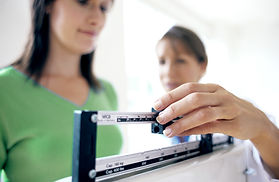top of page
The Benefits of Clinical Exercise
Certified Physical Trainer & Nutitionist Expert
Clinical exercise has a range of benefits and has been described by the Chief Medical Officer as a 'wonder drug'. It can benefit you if you have any of the following;

Mental health
Cardiac rehab has long been recognised as an effective way to improve survival. In a large Dutch study the survival benefit was found to be up to 4 years. Additionally it;
~Reduces angina
~Improves cholesterol readings
~Reduces blood pressure (see below)
~Improves mental wellbeing (see below)
~Increases your chance of returning to work and leisure activities
-
High blood pressure
A blood pressure reading of 140/90 mmHg is classed as hypertension. Exercise can;
~lower blood pressure by 5-7 mmHg and the effect lasts for up to 12 hours after each bout of exercise.
~Even small decreases in in blood pressure of 2 mmHg reduces the risk of stroke by 14-17%
~These small decreases also reduce the risk of coronary heart disease by 6-9%
Both type I and type II benefit from clinical exercise. Benefits include;
~Improved insulin sensitivity which can lead to a reduction in medication
~Weight loss, which also increases insulin sensitivity
~Improved blood glucose control (type II)
~Decreased risk of developing cardiovascular disease
Exercise is effective at treating clinical symptoms of depression, anxiety and stress.
~Some studies have found exercise to be as effective as medication and psychotherapy in treating depression
~Exercise can reduce long-term anxiety and just a single bout can reduce anxiety in the short-term
~Active people have fewer anxiety symptoms than inactive people
~People who exercise regularly fall asleep faster and sleep deeper and for longer than non-exercisers
Exercise is key to building and maintaining bone mineral density and prevent falls. Specifically it
~Slows down the rate that bone mineral density declines
~Improves muscle strength. Muscle weakness is the strongest risk factor for a fall
~Improves balance
While the advice use to be to rest if you have back pain, the consensus from
health professionals is now to keep active. This can
~Help prevent lower back pain coming back
~Relieve chronic back pain
~Relieves muscular tension
People with all degrees of severity of chronic obstructive pulmonary disease (COPD) benefit from clinical exercise. These benefits include;
~Reduction in breathlessness
~Reduction in fatigue
~Improved exercise capacity
~Increased sense of wellbeing
Exercise is an effective way to manage weight. If you are clinically overweight
or obese (check here) the first 10-15 lbs you lose can lead to;
~20 mmHg reduction in diastolic blood pressure
~10 mmHg reduction in systolic blood pressure
~20% reduction in total mortality
~30% reduction in diabetes-related deaths
~40% reduction in obesity-related cancer deaths
Although osteoarthritis and rheumatoid arthritis differ, the effects of clinical exercise are very similar. These include;
~Reduced joint pain and stiffness
~Increased flexibility
~Improved muscle strength
~Reduced disability
~Decreased risk of heart disease
~Improved moods and decreases risk of depression
In addition people with Rheumatoid Arthritis benefit from
~Reduction in fatigue
~improvements in sleep
~Improved immune function
Continuing to be physically active can lead to many benefits, specially it can;
~Relieve mild spasticity
~Reduce fatigue
~Improve sleep and appetite
~Improve bladder and bowel control
~Improve mobility
~Improve balance
~Relieve some types of pain
~Improve strength
-
Cancer
Being physically active is important during every stage of cancer
~It can help maintain or improve the strength needed for performing everyday tasks without increasing fatigue
~It can combat fatigue associated with cancer and its treatment
~It can improve your mental resilience and wellbeing
~After cancer treatment it can reduce the risk of cancer coming back. It lowers the risk of breast cancer returning by 40%
~During advanced cancer physical activity can help maintain independence and wellbeing
References
Department of Health (2004). At least five a week. Evidence on the impact of physical activity and its relationship to health. London: Department of Health.
Level 4 Cardiac Exercise Instructor Training Module. (2016). 4th ed. Leeds: Human Kinetics Europe.
MS Trust. (2018). Keeping active. [online] Available at: https://www.mstrust.org.uk/a-z/exercise-and-ms [Accessed 19 Jun. 2018].


Heart
BP
Diabetes
Osteo
Back
COPD
Weight
Arthritis
MS
Cancer

bottom of page
